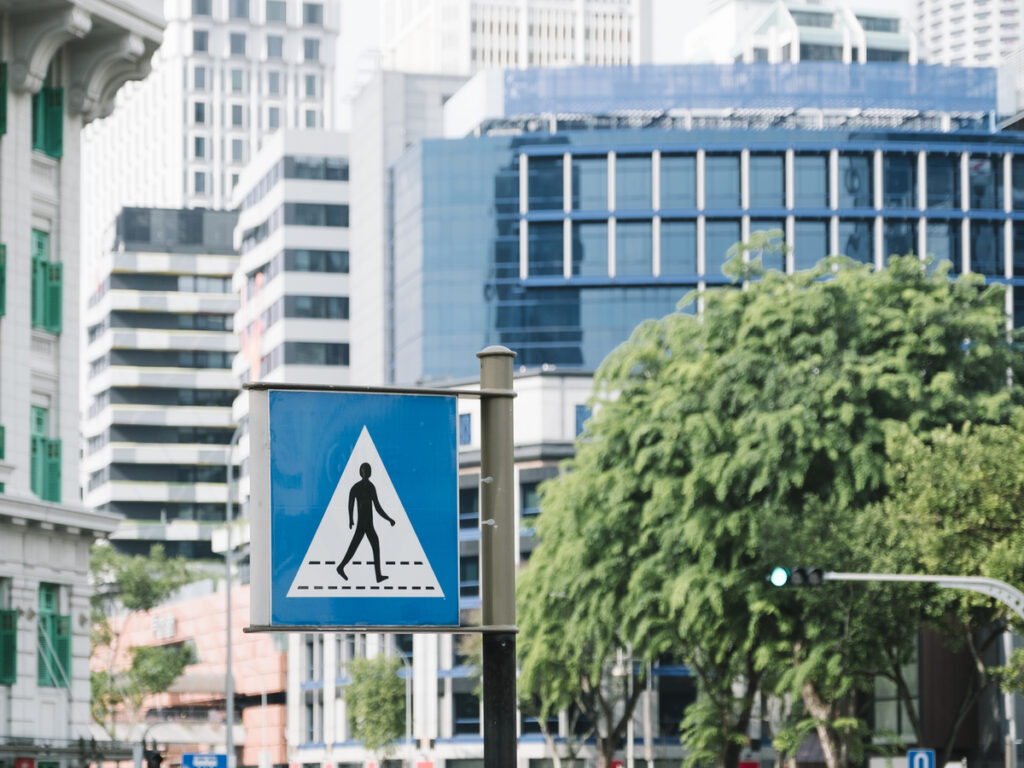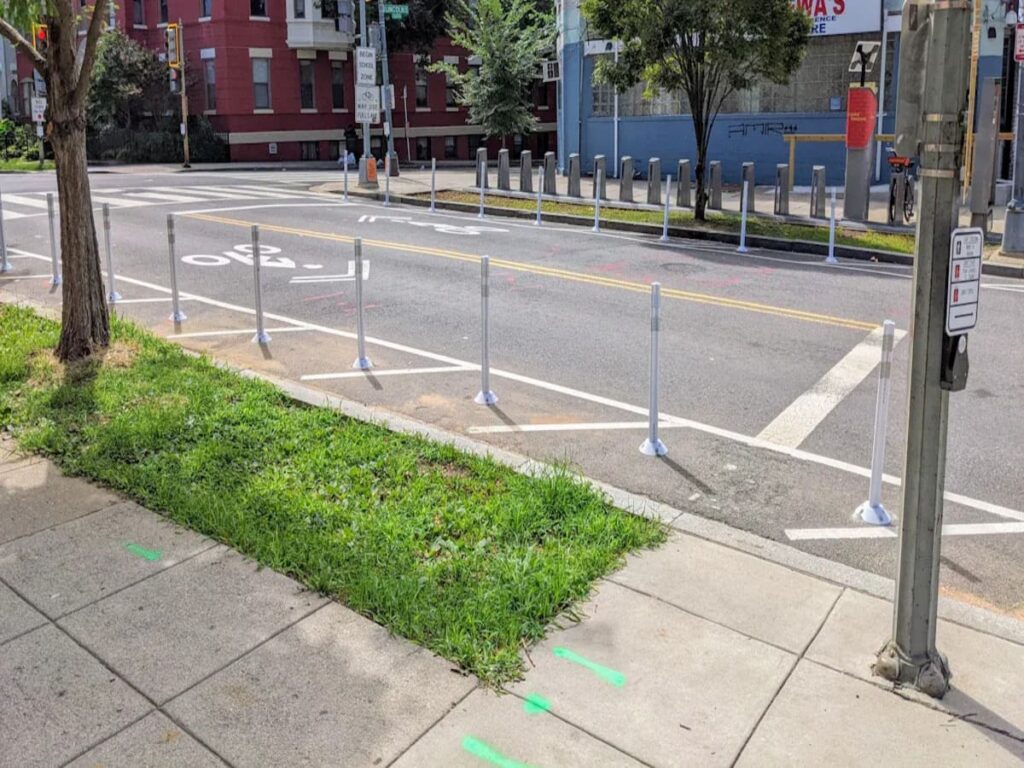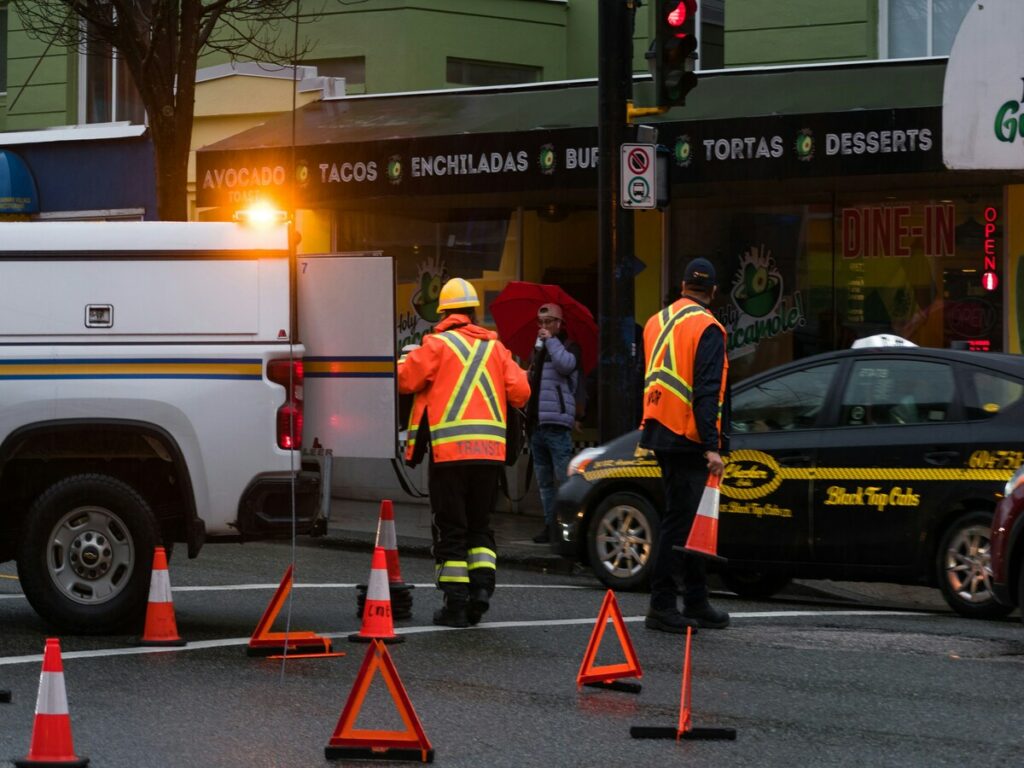
Have you ever thought about how Verkehrskegel help safety? By linking cones, you can make a cone barrier. This is great for controlling traffic or marking danger zones. These barriers are used in many places. They guide cars in construction areas, save parking spots, or lead crowds at events. They are easy to use and work really well.
Overview of Cone Barriers
Definition
A cone barrier is a tool for safety. It links traffic cones to make a boundary. This helps control traffic or block off areas. These barriers fit different spaces and needs. Sie sind leicht, einfach zu bedienen, und leicht zu sehen. This makes them great for quick use.
Here’s why cone barriers are helpful:
| Schlüsselfunktion | Beschreibung |
|---|---|
| Adjustable Design | Can stretch from 4 Zu 10.5 feet to fit spaces. |
| Compatibility with Cones | Made to attach securely to traffic cones for easy setup. |
| Sichtbarkeitsverbesserungen | Bright colors and reflective parts make them visible in low light. |
These features make cone barriers a good choice for safety zones.
Zweck
Why use cone barriers? They do more than mark spaces—they keep people safe. Here are some reasons to use them:
- Guide people and cars to avoid accidents in busy areas.
- Keep people safe by marking protected zones.
- Stop cars from entering work areas.
- Use bright colors to create clear barriers for everyone.
- Lower accident risks by marking lanes and danger zones.
Whether it’s for a work site, Ereignis, or emergency, cone barriers help keep things safe and organized. They are simple but very useful.
Materials and Accessories for Cone Barriers
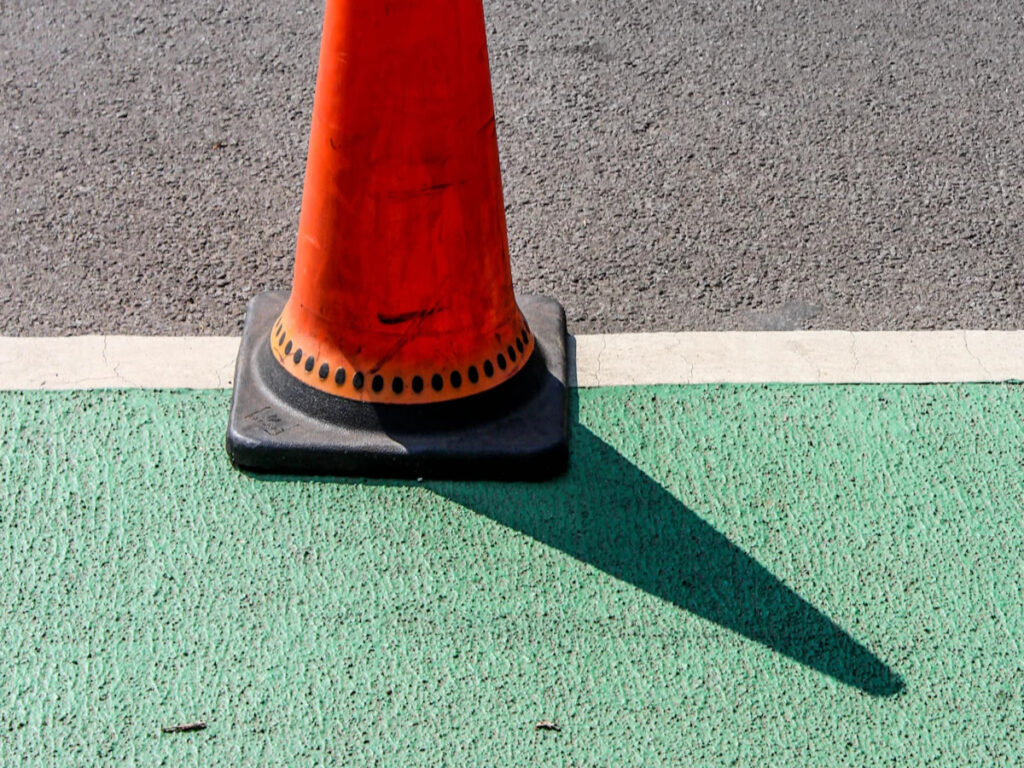
Making a cone barrier needs the right items. Let’s see what you’ll need.
Main materials: traffic cones and connecting tools
Traffic cones are the base of any cone barrier. They are made from strong materials like plastic, PVC, oder Gummi. Jeder Typ hat seine eigenen Stärken:
| Material | Merkmale | Benefits for Strength |
|---|---|---|
| Plastik | Hart, stands up to wind and car hits | Very strong and long-lasting |
| PVC | Dauerhaft, bends easily, resists weather and chemicals | Light and simple to move |
| Gummi | Stretchy, absorbs shocks, grips well, Den lange dauert | Stays steady in windy places |
You’ll also need tools to connect the cones. These tools keep the barrier secure and in place.
Types of connecting tools: tape, Ketten, bars, cone top barrier
There are different tools to link cones. Each one works for a specific job:
- Barrier TapeS: Light and quick to set up. Great for short-term use like parking areas or work zones.
- Kunststoffkette: Bendable and good for longer spaces. Best for areas needing stronger barriers, like work sites.
- Kegelstange: Strong and firm. Perfect for busy spots or long-term setups.
- Kegelförmige Barriere: Designed to fit on top of a traffic cone, enhancing its visibility and signaling capabilities. Often used with an orange cone barrier, it can include features like reflective materials or retractable barriers, making it effective in directing traffic and marking hazardous areas.
Pick the tool that works best for your needs.
Extra add-ons: LED lights and weights
Want to improve your cone barrier? Hinzufügen LED -Leuchten or weights. LED lights make cones brighter in the dark. They shine red or amber, helping people see them better. This lowers accident risks and boosts safety. Weights help cones stay in place. They are useful in windy or bad weather.
With these items, you can build a cone barrier that is safe and dependable.
How to Pick the Best Accessories
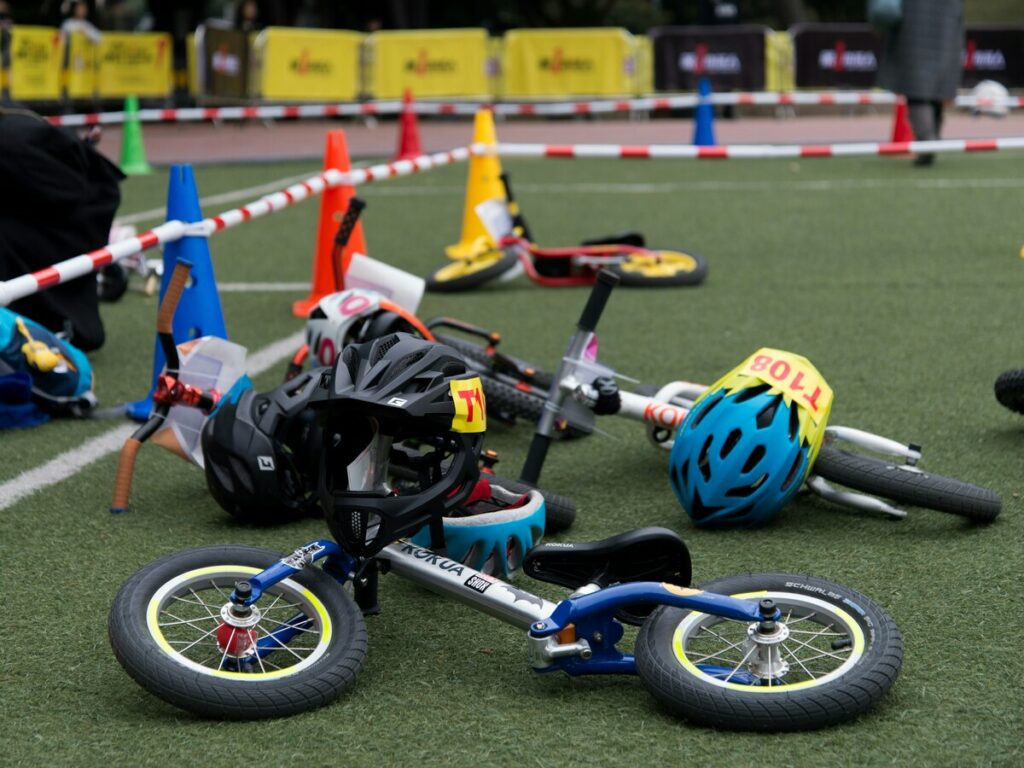
Picking the right accessories makes your cone barrier safe and useful. Let’s go through it step by step.
Think About the Location
Where you use the barrier matters a lot. Fragen Sie sich: Where will it go?
- For open spaces like parking lots or events, verwenden chain or safety cone bar. These safety cones with chain can change size to fit the area.
- Für windige Orte, hinzufügen Gewichte to keep safety cones with chain steady in bad weather.
- For dark areas, verwenden reflective tape or LED lights. These make the safety cone barrier easy to see and safer.
Tipp: Match your accessories to the location. This helps the safety cone barrier work well.
Focus on Safety and Strength
Sicherheit is the most important thing. A strong safety cone barrier stops accidents and keeps people safe.
- Verwenden weighted cones in risky spots like construction zones. They won’t fall over easily.
- Für den langfristigen Gebrauch, wählen strong tools like traffic cone bars. These hold up better than tape or chains.
- An geschäftigen Orten, bright or reflective items make the barrier easy to notice.
Notiz: A weak or hard-to-see safety cone barrier can cause problems. Make sure it’s strong and visible.
Make It Easy to Set Up
Setting up and taking down should be quick and simple. Choose easy-to-use tools.
- Barrier tape is light and fast to set up. It’s great for short-term use.
- Retractable traffic cone bar is simple to adjust and remove. They’re perfect for changing spaces.
- Don’t pick tools that are too hard to use unless needed.
Für die Spitze: Test your cone barrier before using it. This saves time and ensures it works well.
By picking the right accessories, your cone barrier will be safe, stark, and easy to handle.
Step-by-Step Guide to Creating a Cone Barrier
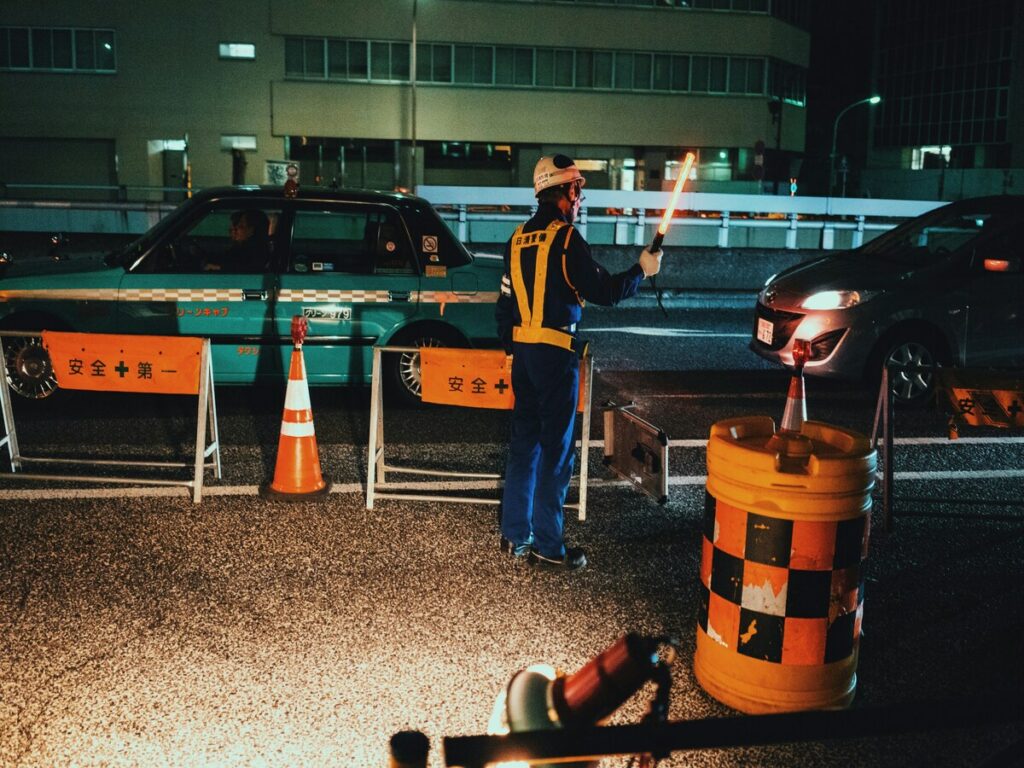
Schritt 1: Pick the right traffic cones
Choose traffic cones that fit your needs. The right cones make your barrier safer and stronger. Suchen Sie nach diesen Funktionen:
- Höhe: Höhere Zapfen (28-36 Zoll) are better for busy areas. They are easier to see and stay steady in wind.
- Gewicht: Heavy cones with weighted bottoms won’t tip over easily.
- Sichtweite: Bright colors like orange or green stand out. Reflective stripes help at night or in dim light.
- Haltbarkeit: Use cones made of PVC or strong plastic. These last longer and handle bad weather.
- Portabilität: Stackable cones are simple to move and store.
Picking the right traffic cones makes your barrier safe and useful.
Schritt 2: Select a connecting tool
Choose a tool to link your cones. The tool depends on your needs. Für kurzfristige Verwendung, lightweight tape works well. For stronger cone barriers, use chains or traffic cone bars. Reflective tape is great for nighttime use. Expandable traffic cone bars work best for areas needing frequent changes. Think about the location and purpose before choosing.
Schritt 3: Securely attach the tool to the cones
Connect the cones with your chosen tool. Make sure everything is tight and secure. Loose connections can make the barrier fail. For safety cones with chain, wrap them around the cone tops tightly. For bars, slide them into the cone slots until they lock. Check each connection to ensure it’s stable.
Schritt 4: Arrange and adjust the cones
Set up the cones to form your cone barrier. Place them about 20 feet apart for a clear boundary. Look from a driver’s view to check visibility. If cones move during the day, fix their positions. Regular checks keep your safety cone barrier safe and effective.
Follow these steps to build a strong, sichtbar, and ready-to-use cone barrier.
Maintenance Tips for Cone Barriers
Keeping your cone barrier in top shape doesn’t have to be hard. With a little care, you can make sure it stays safe and effective for a long time. So können Sie es tun.
Regularly Inspect Accessories
Take a close look at your barrier every now and then. Check the cones, tape, Ketten, or bars for any signs of wear or damage. Suchen Sie nach Rissen, verblassende Farben, or loose connections.
Tipp: Pay extra attention to reflective tape or LED lights. If they’re not working properly, your barrier might not be visible at night.
By catching problems early, you can fix them before they become bigger issues.
Cleaning and Maintenance
Dirt and grime can build up on cones and accessories over time. This can make them less visible and less effective. Use a damp cloth or mild soap to clean the cones and connecting tools. For reflective tape, wipe it gently to keep its shine.
Für die Spitze: Clean your barrier after heavy use or bad weather. This keeps it looking good and working well.
A clean barrier not only looks professional but also ensures maximum visibility.
Replace Worn or Damaged Parts
Manchmal, parts wear out no matter how well you take care of them. If a cone cracks or a chain breaks, ersetzen Sie es sofort. Don’t wait for it to fail completely.
Notiz: Always keep a few spare cones and accessories on hand. Hier entlang, you can quickly swap out damaged parts without disrupting your setup.
By replacing worn parts, you’ll keep your barrier reliable and safe for everyone.
With these simple steps, your cone barrier will stay in great condition and ready to use whenever you need it.
OPTsigns’ Cone Barrier Solutions
All-in-One Accessory Shop
Need tools for a strong cone barrier? OPTsigns has it all! OPTsigns sell many accessories to make barriers safe, sichtbar, und einfach einzurichten. Whether you’re handling traffic, hosting an event, or blocking off areas, they have what you need.
OPTsigns offers top-quality traffic cone bars. These retractable cone bars are light and easy to carry, great for temporary use. Some models even have reflective sheeting to help people see them in low light.
Changing a cone into a barrier is easy and useful for short-term safety. These barriers help keep people safe, Unfälle verhindern, and work in many places. Here are the main advantages:
| Hauptvorteile | Details |
|---|---|
| Bessere Sicherheit | Cone bars make clear barriers, keeping drivers and walkers safe. |
| Weniger Unfälle | They lower accident chances by marking lanes and danger spots, helping traffic move smoothly. |
| Einfach zu bedienen | Light and portable, they are simple to move and adjust. |
| Spart Geld | Cheap and reusable, they are a budget-friendly option compared to fixed barriers. |
| Works Anywhere | Good for inside or outside, they fit different spaces and conditions. |
Using good materials and taking care of your barrier will keep it strong and ready for use in any situation.


